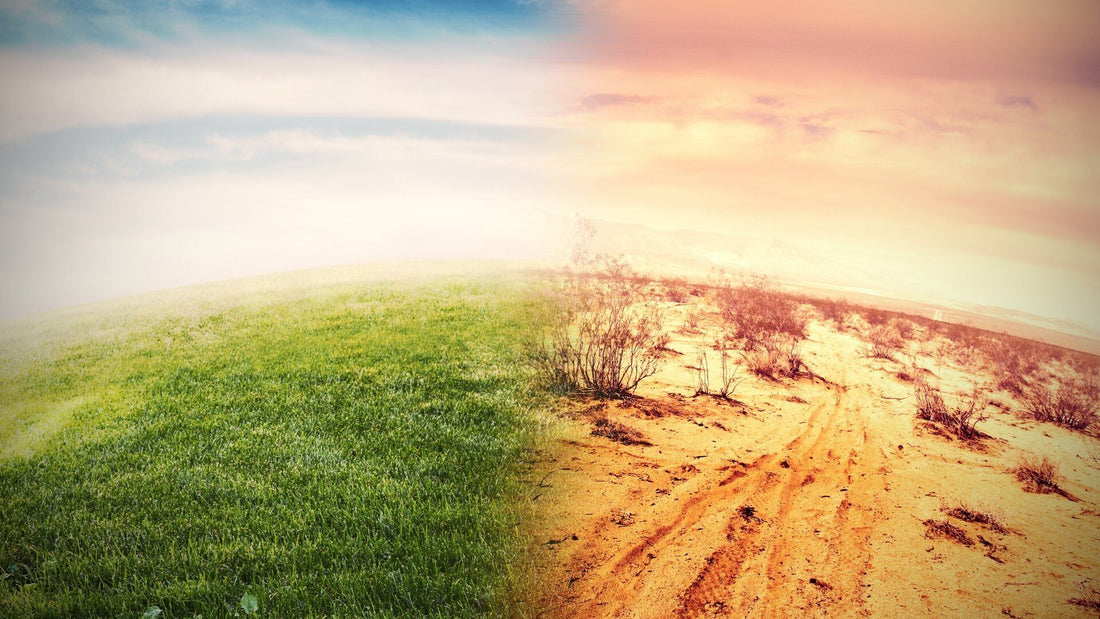
Bioplastics And Biodegradable Plastic: The Breakdown
Share
Most environmentally conscious people understand the problem with plastic. It’s an awesome substance, useful for so many things, but not very eco-friendly. It’s made of petroleum, takes forever to breakdown, and causes even more problems when improperly disposed of. The world becomes more interested in climate change and the human impact on the planet every day. Plastic is a major offender.
Because of growing concern over plastic products, the industry innovated a couple of solutions. Sure, there are recycled plastic products which is certainly a start. But, what about bioplastics and biodegradable plastic? They may sound similar based on the name alone, but bioplastics and biodegradable plastics have many different compositions, impacts, and solutions to the environmental risks plastic poses. A closer examination is necessary.
The Problem With Plastic
Plastic is a substance made of carbon-based polymers from petroleum. These long-chain polymers help give plastic its incredible flexibility. For decades, plastic has been the go-to material for all sorts of items that are designed for single or short-term use.
Plastic wrap, plastic containers, plastic grocery bags- you get the idea. We use these items and toss them, but it can take up to 500 years for mother nature to break down and dispose of this persistent product.
Burning is a no-go. It releases toxic chemicals into the air. Recycling is a good option, but it requires users to be diligent about correctly sorting and getting their plastic to a recycling center. Then, even more, energy is used to break the plastics down for reuse.
All this plastic takes a lot of oil to create, too. Some estimates indicate that 200,000 barrels of oil every day is used to create plastic packaging for just the United States.
The world can’t break its plastic habit, however. It’s estimated that 8 billion plastic bags get used in Britain every year. Unfortunately, some of that trash ends up in nature, the ocean, and washed up on shore. Animals get stuck in it as well, and strangle or struggle along with a synthetic attachment. There must be a better way.
Bioplastics
Bioplastics are fascinating creations. They can look and feel nearly identical to petro-plastic with a much gentler impact. They’re created differently, with chemicals that are less harsh than conventional petro-plastics. Bioplastics break down much faster and more easily as well, and offset their own carbon footprint since they gobbled CO2 while they were alive.
If you’ve heard of popular corn starch-based materials, you’ve heard of bioplastics. This material is also called Polylactide acid or (PLA). The molecules of cornstarch in its composition slowly take on water, swell, and eventually fragment.
Bacteria can dine more easily so the breakdown is faster. It produces nearly 70% less greenhouse gas during decomposition, too. Eventually, bioplastic vanishes completely.
You’ll commonly see PLA used in take-out containers and food packaging. Some disposable cutlery is also made with PLA.
Biodegradable Plastic
Biodegradable, photodegradable, or oxydegradable, plastic, on the other hand, is still made from petroleum. Additives are included in their composition that hastens their own demise. They break down faster, but some leave toxic residue behind.
Speaking of that residue, you can compost PLA plastics, but you absolutely cannot compost biodegradable plastic. Take a closer look at compostable plastic here in our companion blog to learn more about the risks. Is the name misleading? To some, biodegradable plastic reasonably sounds much better than traditional petro-plastic and the truth isn’t so flattering. At least this kind of plastic won’t sit in its original form for 500 years, but it doesn’t break down cleanly.
The Plastic Wrap Up
To wrap up this discussion on eco-friendly plastics, both biodegradable plastic and PLA or Bioplastics are better than the plastic bags of yore. Bioplastics are far superior across the board on environmental impact during manufacturing, greenhouse gas emissions, net carbon footprint, decomposition safety and speed. Biodegradable plastics won’t hang around as long, but overall, they’re just a baby step.
With any luck, the future holds even more diversity and innovation for the world of plastics as we strive to rid our global addiction to them. Things are looking up.

We will only handle press inquiries. If you have questions regarding an order please contact our customer care. media@biotuff.com.au
In the spirit of reconciliation, Biotuff Australia acknowledges the Traditional Custodians of the country throughout Australia and their connections to land, sea and community.
We pay our respects to their elders past, present and emerging, and extend that respect to all Aboriginal and Torres Strait Islander peoples today and everyday.
